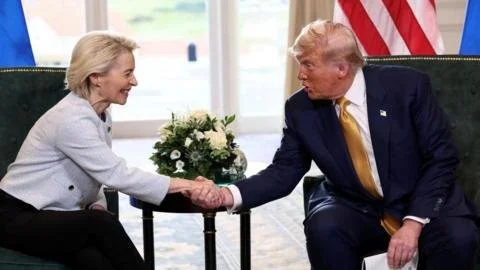From Threats to Deals: Trump Lowers Pharma Tariffs in US-EU Trade Agreement
US President Donald Trump has recently shifted gears regarding proposed tariffs on pharmaceuticals and semiconductors from the European Union (EU). Initially, Trump had indicated that these sectors could face tariffs as high as 250% for pharmaceuticals and 100% for semiconductors, marking a significant threat in US-EU trade relations. However, in a new agreement revealed last Thursday, these tariffs have been capped at 15%, aligning them with the majority of other sectors included in the trade deal.
Despite the lowering of tariffs, the EU must first legislate to eliminate US export tariffs to zero before this deal can fully benefit both parties, particularly regarding car exports, which would see a reduction from 27.5% to 15%.
The trade agreement was initially struck between Trump and EU Commission President Ursula von der Leyen during a meeting in Scotland. The revised terms aim to foster a more cooperative trade environment, reducing overall tariffs from 30% to 15% for a broad range of goods, while showcasing mutual benefits across various sectors.
Ireland’s Deputy Prime Minister Simon Harris noted the importance of the agreement, especially for Irish exporters heavily reliant on the pharmaceutical market. As the EU prepares to enact the legislative changes necessary for the deal, EU Commissioner Maros Sefcovic reaffirmed their commitment to kick-start the legislative process immediately.
However, the agreement wasn’t without its disappointments; both sides expressed frustration that wine and spirits didn’t escape tariff inclusion, affecting respective markets on both sides of the Atlantic. Industry representatives, including the French wine exporters federation and the Distilled Spirits Council in the US, highlighted concerns that higher tariffs on wines and spirits would hinder market growth and complicate business plans for producers and retailers.
Overall, U.S. Secretary of Commerce Howard Lutnick described the agreement as a significant win for American producers, paving the way for expanded access to the vast and lucrative European markets. As negotiations continue and relationships evolve, trade experts suggest that this deal is merely a foundational step towards more comprehensive collaboration in the future.

